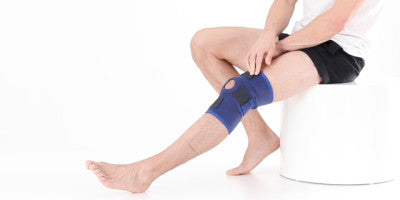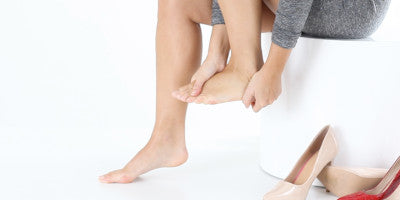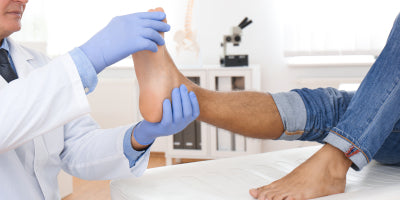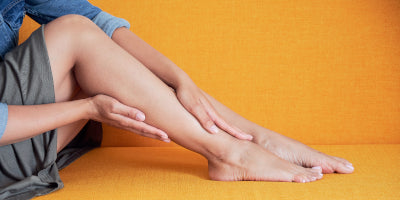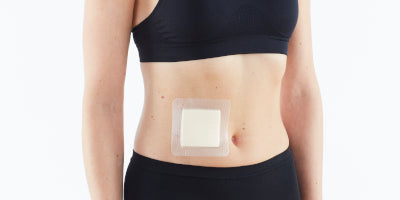How to ease sciatica pain during pregnancy

Pregnancy can be a wonderful time for expectant mothers but the back and leg pain that often comes alongside pregnancy? Not so wonderful. Back and leg pain are fairly common complaints among mothers to be, but sometimes the usual discomfort can be more severe, leading to a certain type of nerve pain called sciatica.
So, what is sciatica? Sciatica is a term given to describe the symptoms of irritation that develop in the sciatic nerve, which runs from the lower back and hips to your feet. You may have sciatica if you feel pain, numbness, weakness or tingling in your bottom, back of your legs or feet and toes, with the most common symptom being a shooting pain along the nerve, from the lower back, through your bottom and down either leg.
The pain can range in severity, and symptoms can sometimes be worse when moving, sneezing or coughing. This pain is usually caused by a trapped nerve in the lower spine, and symptoms usually last between 4-6 weeks, but sometimes longer.
What causes sciatica to flare up?
In the past, rest was recommended for back pain and associated conditions but these days, it is understood that sitting and lying down can actually cause sciatica symptoms to flare up. This is because prolonged sitting, such as when you’re sat at a desk or driving, can put pressure on the disks in the lower back, which can sometimes be the cause of sciatica symptoms. Lying down is unlikely to make your symptoms worse, but it is unlikely that it will help you get better, which is why staying as active as possible is recommended.
Pregnancy doesn’t usually cause sciatica but it can make things more uncomfortable. This could be because weight gain and increased fluid retention can put pressure on the sciatic nerve as it runs through your pelvis, pinching it and causing pain. Pregnancy also causes your centre of gravity to shift forward, which can lead to the muscles in your bottom tensing up and putting further pressure on the nerve.
Most women don’t see symptoms until their third trimester, and the pain can be intermittent, depending on how much pressure is being put on the nerve. Symptoms can sometimes continue until a few months after giving birth, once the weight and fluid of pregnancy has been mostly lost.
How to relieve sciatica pain
Sciatica usually gets better with time, with most symptoms easing in 4-6 weeks. In the meantime there are things you can do to relieve pain and make symptoms more manageable. These include:
- Hot and cold therapy Use cold therapy first for a few days and then move on to heat. Apply each for a few minutes each day on your lower back to ease pain.
- Exercise. Keep moving, as inflammation can improve when you’re in motion. Avoid strenuous exercise and stick to low impact activities such as walking or swimming.
- Sleep with a pillow. Placing a pillow between your knees when sleeping on your side could help relieve pressure on your back.
- Pain relief. Over the counter medication such as paracetamol can help relieve pain. Check with your GP before taking any painkillers during your pregnancy
- Consult your GP or midwife. They may be able to refer you for physiotherapy if self help measures don’t improve your symptoms.
- Try some gentle back stretches. We’ve included some suggestions below for stretches you can try.
What exercises can I do for sciatica?
There are a number of exercises that you can find online or through expert advice from your GP or midwife. Below are two common sciatica pregnancy stretches that may help.
Seated Piriformis Stretch

This stretch helps to ease the piriformis, a muscle deep in the glute which can irritate the sciatic nerve when tight.
- Sit on a chair with your feet flat to the ground.
- Lift one leg, crossing your right ankle over onto your left leg. Keeping your back straight, lean forward until you feel a stretch in your glutes.
- Hold for 30 seconds and repeat on the other side.

This is a great stretch to repeat throughout the day if you’re in a desk based job.
Child’s pose

This popular yoga pose is a great way to relieve sciatica pain. Stretching forwards helps to open up your spine in the opposite direction to its usual arched position during pregnancy, which can help to relieve your symptoms.
- Start on your hands and knees
- Spread your knees wide with your big toes touching.
- Sit your bottom back down onto your heels, leaning forward until your head is on the floor and your hands and arms are stretched forward.
- Nestle your belly in between your thighs to get as low to the ground as possible and relax.
Hold the pose for up to a minute and repeat throughout the day as necessary.
If your symptoms have not improved after trying home treatments for a few weeks, or if the pain is getting worse or is stopping you doing your normal activities, consult your GP or midwife.

If its rest and recovery you need, our hot and cold therapy range offers just that. While heat therapy helps to target muscle and joint pain by relaxing muscles and improving blood flow, cold therapy works to tackle muscle swelling, soothing aches and pains.



